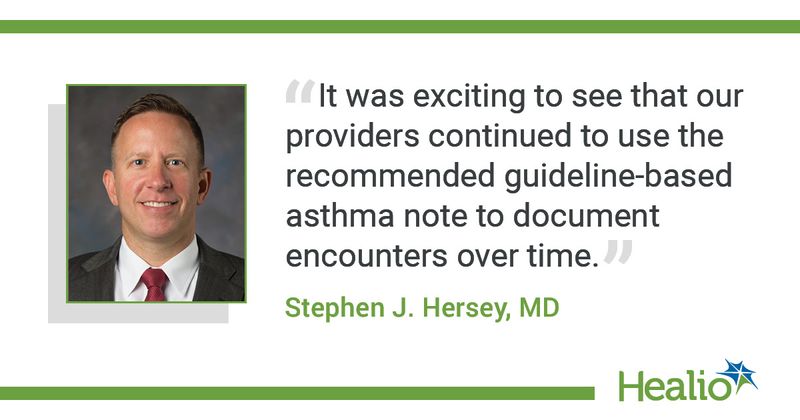Primary care intervention reduced asthma-related ED visits by 33%
Key takeaways:
- A primary care network reduced asthma-related ED visits by 33% using a five-component intervention.
- Physicians in the network addressed asthma control at all encounters, regardless of the reason for the visit.
A primary care network reduced asthma related ED visits among its patients by one-third over the course of a decade by implementing a five-component intervention, according to study results published in Pediatrics.
“Initially, one of our clinics enrolled in an asthma quality improvement [QI] opportunity through the Ohio Chapter of the American Academy of Pediatrics,” Stephen J. Hersey, MD, clinical associate professor of pediatrics at The Ohio State University College of Medicine, told Healio. “A QI leader was established as a result of this, which eventually allowed expansion of our efforts to all clinics.”

In 2010, Hersey and colleagues implemented five sequential interventions in their primary care centers and developed a principal that physicians should address asthma control at all patient encounters, regardless of the reason for the visit. The interventions, as outlines in the new article, were:
- increase the use of asthma action plans;
- increase the number of visits in our primary care-based asthma specialty clinics;
- increase the use of a standard asthma note at any visit for a patient with asthma;
- increase the documentation of the Asthma Control Test, and;
- increase the use of step-up therapy for poorly controlled asthma patients.
In 2010, there were 21.7 asthma-related ED visits per 1,000 patients per year in the clinics. By 2019, the rate was 14.5 per 1,000 patients per year — a 33% decrease, with two center line shifts over time, according to the researchers. Four of the five key interventions in the goal metrics were achieved and sustained.
“It was exciting to see that our providers continued to use the recommended guideline-based asthma note to document encounters over time,” Hersey said. “Adding a new intervention into practice can be difficult for any of us. However, when that intervention makes a process more efficient, it can be a benefit and something that is more easily adopted into regular practice.”
Such routine and “frequent assessment of a patient’s asthma status can be achieved in a busy pediatric practice,” Hersey added.
“Maximizing the use of the electronic health record to make this assessment as efficient and effective as possible is key,” Hersey said.
Hersey added that establishing a team of QI leaders who can meet regularly to achieve goals is “critical.”
“It would be exciting to see these efforts reproduced in other large medical centers,” Hersey said.
